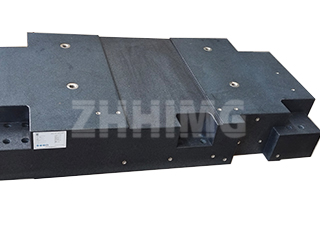In the field of ultra-precision engineering, custom-shaped bases play a critical role as structural supports for advanced machinery, metrology instruments, semiconductor systems, and various industrial platforms. Their complex geometries, diverse materials, and strict technical requirements make the assembly process far more demanding than that of conventional components. Achieving stable performance, long-term reliability, and full compliance with design specifications requires a disciplined approach, meticulous craftsmanship, and an understanding of precision engineering fundamentals.
Before assembly begins, technicians must fully understand the design intent. This includes carefully reviewing technical drawings, tolerances, mounting interfaces, material specifications, and any functional constraints related to the final application. Familiarity with these details helps prevent dimensional errors and ensures that every component is placed in its correct orientation. Equally important is a thorough inspection of all parts. Surfaces should be free from scratches, corrosion, or deformation, and mounting holes must match the required alignment. At this stage, precision tools such as micrometers, dial indicators, levels, and lifting equipment should be prepared and calibrated to maintain measurement accuracy throughout the process. A stable, clean working environment—ideally with controlled temperature and humidity—further contributes to reliable assembly outcomes.
During assembly, accurate positioning is fundamental. Custom-shaped bases often incorporate non-standard features, multiple contact points, and complex interfaces that require high-precision alignment. Using tools such as electronic levels, laser guides, or calibrated reference surfaces ensures that the structure maintains correct flatness, perpendicularity, and symmetry. Tightening and fastening must also follow engineering specifications. Whether the connection method involves bolts, adhesives, inserts, or hybrid structures, the applied force should be carefully controlled to avoid deformation or instability. When preload is required, torque tools or electronic tightening systems help maintain consistent clamping force.
As adjustments are made, technicians must evaluate the overall performance of the base. This may involve balancing rotating elements, verifying sliding clearances, confirming parallelism, or optimizing mechanical stiffness. Lubrication for moving parts should be applied with precision—neither excessive nor insufficient—and the selected lubricant must be compatible with the material and operating environment. For bases that will work in environments with humidity, chemicals, or high temperatures, corrosion-resistant coatings or protective treatments are essential to ensure long-term durability.
Once assembly is complete, the base must undergo a comprehensive evaluation. Visual inspection helps verify surface integrity and connection quality, while functional testing confirms compliance with performance requirements such as load capacity, stability, and vibration behavior. Measurements collected during testing—including deformation, vibration amplitude, and repeatability—provide important data for quality assurance and future process optimization. Any necessary fine-tuning should be completed before the base is released for integration into equipment.
Detailed documentation of the entire process, including inspection results, testing data, and assembly steps, becomes part of the product’s technical record. This information supports long-term maintenance, assists in future troubleshooting, and ensures full traceability—an essential element in industries where precision and reliability are non-negotiable.
In ultra-precision manufacturing, the quality of a custom-shaped base directly impacts the performance of the equipment it supports. A rigorous, well-managed assembly process not only guarantees structural accuracy but also enhances operational stability and extends service life. Through strict adherence to engineering standards and continuous refinement of assembly methods, manufacturers can meet the increasing demands of advanced industries such as semiconductor production, optics, measurement technology, and high-end automation.
Post time: Nov-18-2025

